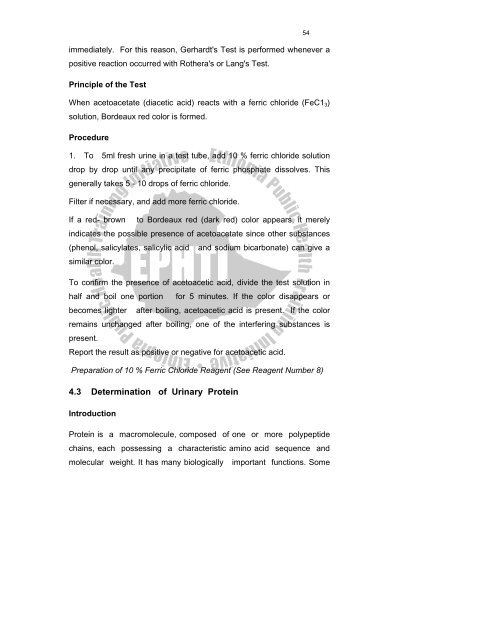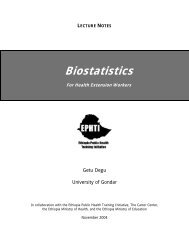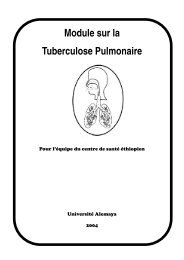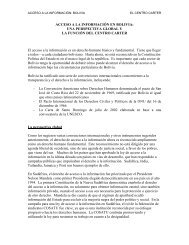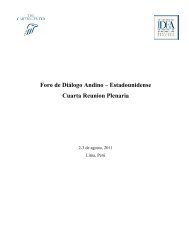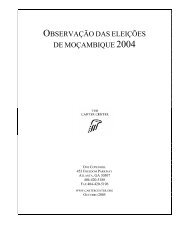Urinalysis - The Carter Center
Urinalysis - The Carter Center
Urinalysis - The Carter Center
Create successful ePaper yourself
Turn your PDF publications into a flip-book with our unique Google optimized e-Paper software.
immediately. For this reason, Gerhardt's Test is performed whenever a<br />
positive reaction occurred with Rothera's or Lang's Test.<br />
Principle of the Test<br />
When acetoacetate (diacetic acid) reacts with a ferric chloride (FeC1 3 )<br />
solution, Bordeaux red color is formed.<br />
Procedure<br />
1. To 5ml fresh urine in a test tube, add 10 % ferric chloride solution<br />
drop by drop until any precipitate of ferric phosphate dissolves. This<br />
generally takes 5 - 10 drops of ferric chloride.<br />
Filter if necessary, and add more ferric chloride.<br />
If a red- brown to Bordeaux red (dark red) color appears, it merely<br />
indicates the possible presence of acetoacetate since other substances<br />
(phenol, salicylates, salicylic acid and sodium bicarbonate) can give a<br />
similar color.<br />
To confirm the presence of acetoacetic acid, divide the test solution in<br />
half and boil one portion for 5 minutes. If the color disappears or<br />
becomes lighter after boiling, acetoacetic acid is present. If the color<br />
remains unchanged after boiling, one of the interfering substances is<br />
present.<br />
Report the result as positive or negative for acetoacetic acid.<br />
Preparation of 10 % Ferric Chloride Reagent (See Reagent Number 8)<br />
4.3 Determination of Urinary Protein<br />
Introduction<br />
Protein is a macromolecule, composed of one or more polypeptide<br />
chains, each possessing a characteristic amino acid sequence and<br />
molecular weight. It has many biologically important functions. Some<br />
54


